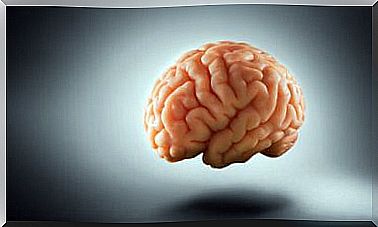The Report In Clinical Psychology

All psychological evaluation process ends with the communication of its results through a report. Therefore, this report must be truthful, objective and transparent, since it implies a scientific and rigorous treatment.
Next, we explain a model of the Report in Clinical Psychology to have as a guide and thus know how to proceed and where to place the information obtained in the interviews, tests and questionnaires.
Characteristics of the Report in Clinical Psychology
- It must be a scientific document. Therefore, its variables must be well defined and nothing or almost nothing should be left to speculation.
- It is a vehicle of communication. The language used, its length and its content must be adapted to the specific case that is being dealt with. It should be technical but at the same time understandable to other colleagues and people.
- Finally, it must be a useful and pertinent document for the case; it should generate added value to the evaluation.

Based on the report proposal by Fernández-Ballesteros (2014), we propose the following model for a Report in Clinical Psychology:
1. Initial data
Evaluator and evaluated data
The evaluated must be registered: name, gender, age, address, telephone number, profession and academic level. In addition, the evaluator must be specified: name, studies, collegiate accreditation and date of the examination.
Goals and personal references
The reason for the consultation and / or the reasons for this evaluation must be made explicit. Do not forget about the objectives that are going to be set for the case.
Biography
It is necessary to add a brief biography of the patient that includes the most significant events of his life:
- Birth.
- Studies.
- Family.
- Profession.
- Current situation.
- Etc.
In any case, the genesis and development of the situation or problem that brings the patient to the consultation must be studied.
2. Procedure and techniques to be used
Make a list with the techniques, tests, questionnaires, etc. used to obtain the information. In addition, the raw data obtained in the tests must be indicated (especially if the report is going to be directed to another psychologist).
Psychological evaluation is a scientific procedure, so the data collected can be useful to other professionals and must present a format that favors this usefulness.
Finally, if any tool has been used for the audiovisual recording of the interview, it should be reviewed in this section. But be careful: remember that by the Data Protection Law this material is confidential.
3. Behavior during examination
Observe and record the motor and verbal behaviors that are considered and have taken place during the evaluation process.
In addition, the degree of collaboration and commitment of the patient must be recorded (if he is a collaborator or not, if he presents resistance …).
4. Results
In this section, the results obtained from the evaluation will be indicated, on which the judgments and statements that the professional considers will be made. This is made up of the following subsections:
Behaviors studied
Specify the most salient behaviors observed during the examination and note them in reference to the behavioral, cognitive, physiological and verbal levels.
Personality and behavioral repertoires
In this section, we must specify everything that refers to the cognitive, behavioral, and physiological-emotional characteristics that are stable in the individual.
Data referring to intelligence, memory, and skills can also be included, if the case so requires. In addition, reference can be made to attitudes, motivations, expectations and also to sensory-motor functions such as laterality, coordination, visuospatial organization, etc.
Environmental conditions
It includes everything that refers to the context in which the patient operates and that may be influencing their problem behavior.
Biological aspects
Here are the explorations of other professionals that are worthy of reference and that may be related to the current situation of the patient.

5. Treatment
Those variables on which therapeutically will be intervened should be selected , as well as the specific treatments that are going to be used.
Ideally, the outcome of treatment can be quantified by quantifying the assessments, thus making a comparison between the initial level and the final post-treatment phase.
If the initial objective of the report was the diagnosis, the preparation of the same will end here. However, if the purpose is the treatment, you will have to continue with the process and go to the next section.
6. Assessment of treatment
It is necessary to analyze the changes that have occurred in the variables that were selected to intervene – check if the proposed objectives have been met.
In addition, it is necessary to point out the impact that the treatment has had on the patient and their environment and, finally and as an addition, it is advisable to do a follow-up at three months, six months and one year.









